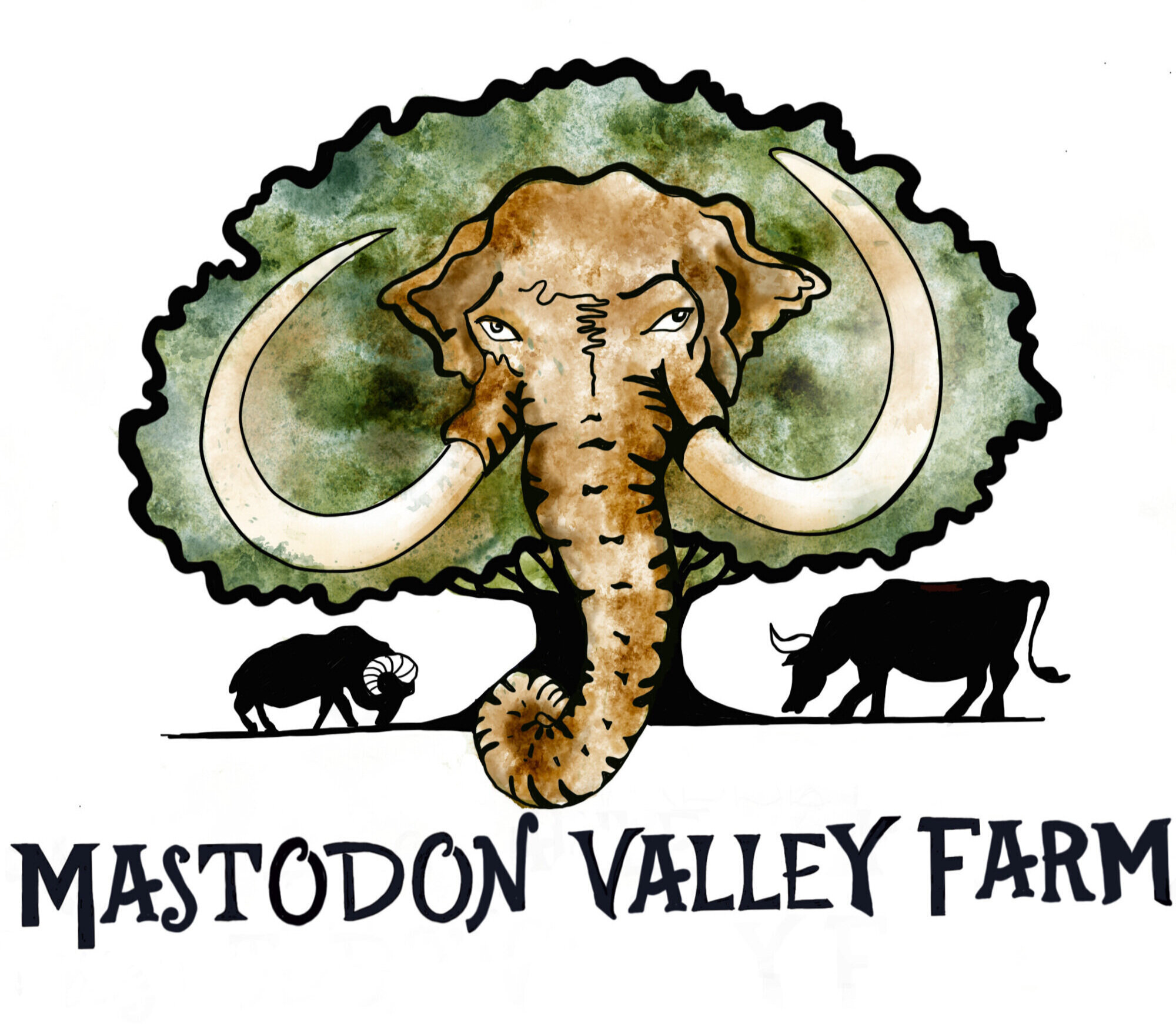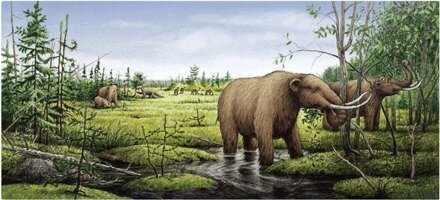Why Mastodon?
For 30 million years,
Mastodons were keystone species of highly productive savanna ecosystems across North America. With their gigantic appetite for woody vegetation, they held back the growth of woody understory which allowed for ultra-diverse and dynamic landscapes. These mastodon-maintained landscapes were the ultimate mammal habitat – groves of fruit and nut-bearing trees and shrubs scattered within lush grasslands – landscapes that supported large populations of horses, camels, sloths, bison, elk, elephant species and many others.
We manage our farm with the mastodon in mind, restoring and maintaining diverse, functional savanna ecosystems that provide us with both abundant, delicious, and healthy food, and all the services we expect from intact ecosystems. We don’t have mastodons in the Driftless area anymore. Now we, humans, are the keystone species. We choose to maintain landscapes that can support diverse grazing animals – deer, cattle, sheep, goats, pigs, turkeys, and chickens, all integrated in ways that mimic the grazing and browsing of horses, sloths, camels, mastodons and a whole host of critters on Pleistocene savannas, or the ways that antelope, water buffalo, rhinos, birds, and elephants graze in Africa’s Serengeti.
For more on the role of megafauna in ecosystem function, check out the book Megaherbivores: The influence of very large body size on ecology.


